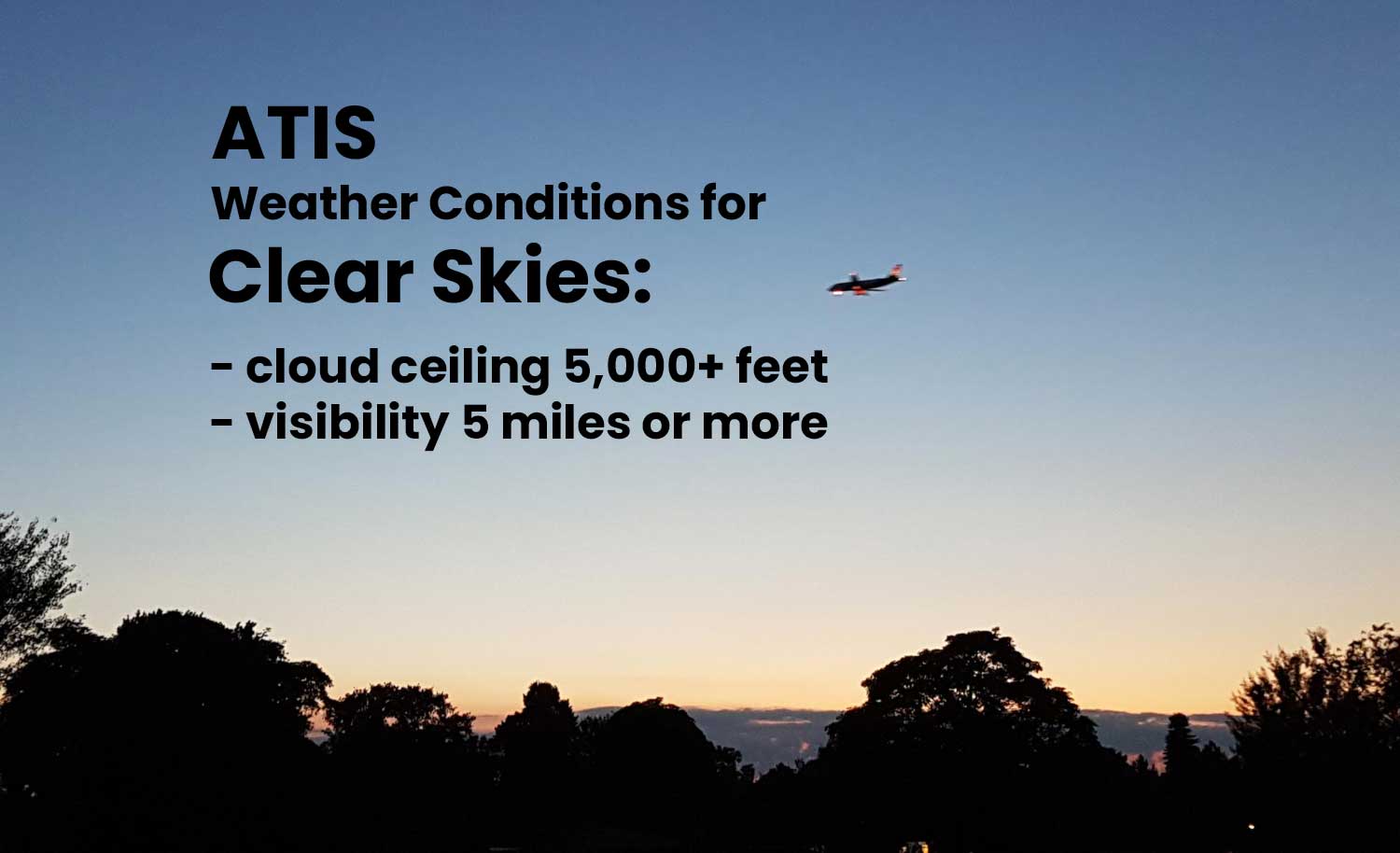ATIS
Automated terminal information broadcasts recorded
Purpose of ATIS
ATIS provides recorded, repetitive broadcast of non-control information in a specific terminal area at busy airports.
Broadcasts:
- Provides human-recorded updates on airport operations.
- Includes weather, runway conditions, NOTAMs, and ATC information.
- Used at towered airports.
Update Frequency:
ATIS content is updated at regular intervals, often every hour or more frequently in cases of significant weather changes or airport operations. Once recorded, it is broadcast continuously on a dedicated frequency.
Example ATIS Broadcast: Sky Condition / Visibility
When an ATIS broadcast does not include information about sky conditions or visibility, it automatically indicates that:
- Ceiling: The cloud base is at least 5,000 feet above the ground.
- Visibility: The visibility is 5 statue miles or more.
This is a standard practice for ATIS broadcasts, indicating that conditions are good enough (i.e., clear skies and good visibility) for pilots to operate without special weather considerations.

Mandatory to Check
Pilots are required to check ATIS before talking to the local ATC, which helps streamline communication and flight prep.
AWOS / ASOS
Automated Weather Forecast Broadcasts at Airports
Purpose
Both AWOS & ASOS are automated systems that provides real-time weather observations. They both delivers specific weather data crucial for flight operations, including pilots’ pre-flight planning and in-flight decision-making.
- Fully automated and operates continuously.
- Common at untowered airports or those without ATIS.
- Focuses solely on current weather conditions.
Weather conditions reported through AWOS include temperature, wind speed and direction, visibility, cloud cover, and barometric pressure.
The two are the same but you’ll find ASOS are at larger airports and AWOS at smaller airports.
Not Mandatory to Check
Unlike ATIS, it is not mandatory to check AWOS before communicating with ATC.



